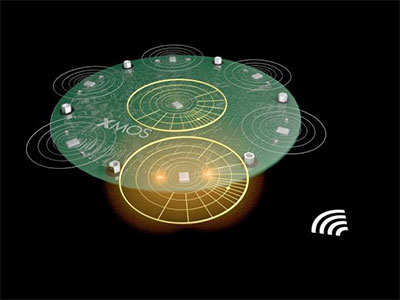
Antonio Gomez; R&D Electrical Engineer with System Test Equipment Engineering Group at Sandia National Laboratories
It’s not uncommon to find that engineers and scientists are reluctant to change. Unlike new features on your smart phone, new ideas in engineering and science can be received with a cold shoulder and large doses of skepticism. For anyone in the field, the statement “this is the way we have always been doing it” is heard numerous times during engineering design sessions. Most engineering teams would rather spend their time designing an automatic screwdriver than designing a new screw. The process is fixed, and the tool should fit the current process: no room for changing the process to fit a better tool.
I see no difference with signal processing. On a daily basis my co-workers and I struggle to make sense of large amounts of noisy data collected from different sensors. The process is always the same: collect the data using our venerable oscilloscopes, use a hardware filter to hopefully reduce noise, apply Fourier and any other traditional analysis tool, and save the results in a popular spreadsheet format. If possible, automate the process to collect data autonomously and fast. In the more than 30 years I’ve been in this field, I’ve witnessed the transition from analog to digital instrumentation, faster acquisition rates, new acquisition and analysis software and so on, but the problems have remained essentially unchanged. Perhaps it’s time to think about redesigning the screw instead of having automatic screwdrivers; to change the way we perceive data and use the vast computing power we have available today to solve some of our old problems. But introducing concepts like machine learning, computational signal processing and deep learning to a discipline heavily based on traditional and rigorous methodologies can be met with stiff resistance, especially from those who aren’t familiar with these new concepts.
I don’t blame anyone for this. We all move in our comfort zone, use the tools we are familiar with, and take for absolute truth the readings that come out of our measuring instruments. Signals don’t have any intelligence; therefore, trying to apply intelligence to our measurements is something some engineers aren’t willing to immediately accept. The concept of having machines that can learn from previous experiences and adjust themselves accordingly is similar to Einstein and Quantum Physics. 
And the reality is that machine learning and signal processing work together very well in many cases. In one of my current projects, I was tasked with measuring a very small current flowing across a component energized with thousands of volts. This component is in parallel with other elements, making it virtually invisible for my instruments to take a direct measurement. The measured data is just a mixture of everything the instrument can read, including the information I care about – which I cannot see. This is when machine learning comes to the rescue: by having a database of measurements previously obtained from unknown parts, I let the machine assemble a model of it given the testing parameters. I use this model to predict how my results should look, and then I compare with my experimental results, selecting the best one that produces the least amount of error.
Previously, I trained my machine to assemble the models using known data and results. This is computational intensive, but I have enough computer power to process large amounts of data in a fairly small amount of time, and get the result that is closer to reality. If we go back to the screw-screwdriver analogy, I have a very powerful screwdriver (my GPU based computer running a trained Machine Learning algorithm) that is very good at handling the new screw design (the previous data and the new data with the hidden information I want).
This all sounds nice, but when I presented this idea to my fellow engineers for review, the reaction was “You are manipulating the data.” Maybe I am, but isn’t this the way we humans work, by reaching conclusions based on our previous experiences?
I’m not stating this is the cure for world hunger, but those of us in the signal processing community should strive to find proven applications of machine learning to signal processing. It was remarkable that during my presentation, I mentioned Google uses similar methods to identify images and faces. Immediately the atmosphere of the meeting changed, and the skeptical attitude moved toward a more receptive one. The successes of Google are now a good reference point to evaluate the potential of smart signal processing (perhaps we should all work for Google).
I would love to see more and more success stories (and unsuccessful ones) of machine learning and signal processing, beyond the very well-known ones of image and speech recognition. The opportunities are out there, and it is up to us to pursue them and show others a smart approach to old problems.
